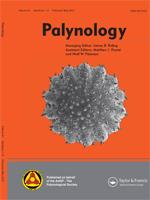Climate during the Early Cretaceous in tropical South America has often been reconstructed as arid. However, some areas seem to have been humid. We reconstructed the floristic composition of two tropical stratigraphic successions in Peru using quantitative palynology (rarefied species richness and abundance), and used the abundance of aridity vs. humidity indicator species to infer the predominant climate conditions of this region. The Berriasian to Hauterivian La Merced succession was dominated by fern spores and was predominantly humid. The Albian Aguas Frias succession yielded rich palynofloras, with 127 species, and also indicates predominantly humid conditions. These results support the hypothesis that the west margin of South America was humid during the Early Cretaceous, thus improving the tropical climate reconstructions during the Cretaceous severe global warming episodes.
How to translate text using browser tools
1 July 2018
Floristic and Climatic Reconstructions of Two Lower Cretaceous Successions from Peru
Paula J. Mejia-Velasquez,
Steven R. Manchester,
Carlos A. Jaramillo,
Luis Quiroz,
Lucas Fortini
ACCESS THE FULL ARTICLE
It is not available for individual sale.
This article is only available to subscribers.
It is not available for individual sale.
It is not available for individual sale.
<
Previous Article
|

Palynology
Vol. 42 • No. 3
August 2018
Vol. 42 • No. 3
August 2018
Cretaceous
global warming
Oriente Group
palynofloras
palynology
quantitative
South American pollen




